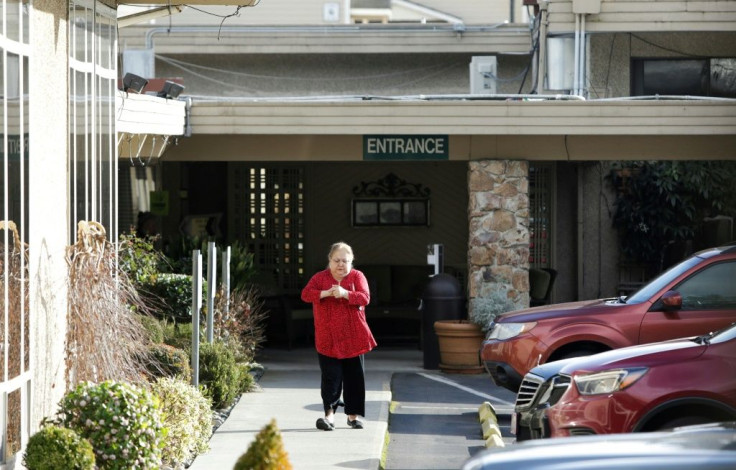Coronavirus In US: Hospitals Would Be Overwhelmed In Worst-Case Scenario

KEY POINTS
- US reported 149 virus cases as of Thursday.
- In case of pandemic in U.S., millions of people would need hospitalization and skilled care.
- Hospitals and health facilities already facing labor shortages.
If the coronavirus epidemic spread widely in the U.S., an estimated 38 million people would need medical care; 1 million to 10 million people might require hospitalization; and up to 2.9 million people could be placed in an intensive care unit.
These figures were based on a worst-case scenario formulated by the Johns Hopkins Center for Health Security.
Among other things, the report cited that the U.S. has about 46,500 medical ICU beds -- while another 46,000 ICU beds at hospital specialty units could be converted for use in the crisis.
But even all these beds would not amount to even half the number of patients that would need them.
"We're talking, potentially, a very large number of people," said Dr. Eric Toner, a senior scholar with the Center for Health Security "It would put a huge stress on hospitals. If it's anything like what China experienced, our hospitals would be inundated with a whole lot of pretty sick people."
Some U.S. hospitals are already preparing for Armageddon.
In Seattle's King County, where eight people have died from the virus, health officials plan to purchase a motel to isolate coronavirus patients.
Dr. Tom Frieden, a former director of the Centers for Disease Control and Prevention and now president and CEO of Resolve to Save Lives, a global public health initiative, warned that hundreds of thousands of patients might also need mechanical assistance to breathe. But the U.S, would not have enough ventilators available for them.
"We don't know if anything like this worst-case scenario will occur, but we do know that there are a lot of things that would be needed in a bad pandemic, and that one of them would be ventilator support for as many patients as possible," he said.
Even if hospitals and clinics repurposed other ventilators, it still would not be enough.
"Not fully. Not in the worst-case scenario – [We would have] hundreds of thousands of people needing ventilator support at the same time," he said.
Toner noted that the vast majority of virus infections in other countries were not serious, but 15%-20% of cases have been serious enough that patients required oxygen, and about 5% of cases were deemed critical, meaning they would need machines like ventilators or extracorporeal membrane oxygenation units.
Making things worse, health care facilities are suffering a labor shortage.
The National Association of County and City Health Officials said local health departments have lost 25% of their workforce since 2008.
"Since the recession, we've really lost a significant portion of our public health workforce. It's very challenging during these times of crisis," said NACCHO President-Elect Jennifer Kertanis. "We do need resources to do this work."
Dr. Bruce Aylward, an assistant director-general at the World Health Organization, noted how Chinese health officials quickly responded to the virus crisis in the city of Wuhan by mobilizing and deploying tens of thousands of health care workers, constructing a hospital in only a week, and rapidly testing hundreds of thousands of blood samples.
"Just a scale we're not used to thinking of," he said. "When we look at how dangerous this disease is, I think we have to be careful looking at the China data, because China knows how to keep people alive from [coronavirus], they're super committed to it, and they're making a massive investment in it as well. That's not going to be the case everywhere in the world.”
It will be a challenge for the U.S. to cope with a Wuhan-type of emergency.
"Nobody is prepared to deal with a pandemic infection, whether it's flu or coronavirus," said Dr. William Schaffner, an infectious disease specialist at Vanderbilt University Medical Center in Nashville, Tenn. "There are no empty beds in our hospital at almost any time. They are full. And that's what we as a society have decided to do. So when you get slammed with a huge number of new patients, you are going to struggle.”
Schaffner pointed out that during the swine flu pandemic in 2009, Vanderbilt ceased performing elective surgeries and converted those parts of the hospital into wards to care for respiratory patients. But staff had to be retrained to use ventilator machines – since patients with the virus need skilled care.
"We can't make a whole bunch more ventilators. We can't do what China did and put up a ‘hospital' in seven days. But hospitals can and should be getting ready now for what would probably be like a flu pandemic," Toner said. "It takes weeks for a hospital to get ready, at least. We may not have weeks before we start seeing significant spread in the United States. It really behooves hospitals and other health care facilities to really get going now."
On Thursday, the CDC reported at least 149 coronavirus cases in the U.S., up from 129 on Wednesday, across 19 states, including new confirmations in Nevada, Tennessee and New Jersey.
Health officials reported 11 virus-related deaths in the U.S., including ten in Washington state. California declared a state of emergency after a coronavirus-related death.
© Copyright IBTimes 2025. All rights reserved.





















